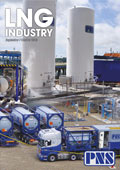Editorial comment
LNG exports from the US are finally gathering some momentum. In the last five months, the US Department of Energy (DOE) has granted three companies approval to export LNG to countries that do not have a free trade agreement with the US (the fourth permit granted in total). The DOE approved each of the applications following careful consideration of economic, energy security and environmental impacts. It also sifted through public comments for and against each application, concluding that exports are not inconsistent with the public interest.
Register for free »
Get started now for absolutely FREE, no credit card required.
The importance of public opinion to the success of any project within the oil and gas industry has been highlighted recently by the intense anti-fracking protests witnessed at Cuadrilla’s test drilling site in Balcombe, West Sussex, UK. In August, the sheer number of protestors on site forced the company to temporarily halt its operations due to safety concerns. And although Cuadrilla’s recent decision to withdraw plans to extend drilling on the site has been attributed to legal ambiguity about underground boundaries, campaigners have greeted the news as a victory for them – a clear demonstration of ‘people power’.
Western Canada faces a similar challenge as it looks to ramp up development of its burgeoning LNG industry. Christy Clark, the Premier of British Columbia (B.C.), has heralded the LNG sector as critical to the region’s long-term economic well-being, suggesting that it could create up to 100 000 new jobs. However, reports suggest that there is growing unrest within local communities affected by proposed pipeline routes. As well as expressing concern about the overall impact on the region, locals also complain that there has been a lack of consultation as crews begin to carry out ‘non-invasive’ work to assess possible pipeline routes from the northeast gas fields to proposed new terminals on the West Coast. To add to the complexity of the situation in B.C., those companies looking to develop LNG projects in the region must also consider the aboriginal communities located on potential pipeline routes. A legal precedent from the Supreme Court of Canada insists that there must be consultation and engagement with First Nations over projects that could impact their traditional territory. As such, the overall success of the LNG industry in B.C. is largely in the hands of its Aboriginal population.
In order to avoid opposition that could result in costly project delays, as witnessed at Cuadrilla’s Balcombe drilling site, it is essential that LNG project proponents take the initiative to build meaningful relations with the local communities that could be affected by their plans, right from the start. Starting on p. 109 of this issue, Hardess Planning Inc. takes a closer look at the delicate situation unfolding in Western Canada and offers some practical suggestions to help ensure that projects are granted a ‘social license’ to operate, as well as a government license.
On the topic of public opinion, following consultation with our readers, LNG Industry is delighted to announce that we will publish an extra three issues next year, taking our annual number of publications to nine. Keep your eyes on lngindustry.com for our 2014 media pack, coming soon, as well as for news of another exciting development for LNG Industry...


